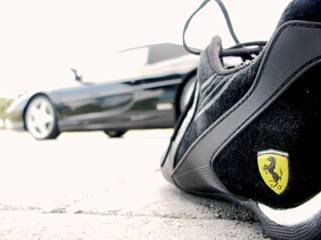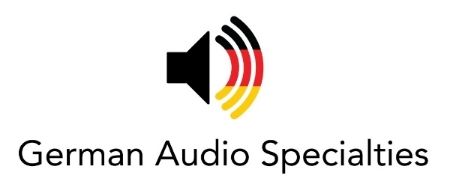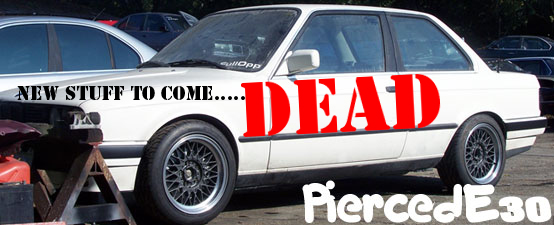Just an article on the E30 that a buddy of mine found for me.
LINK TO ARTICLE


Ultimate Driving Machine or Ultimate Money Pit?
Older BMW 3-Series are affordable and a blast to drive…but will repairs put you in the poorhouse?
By Andrew Stoy
The Background
Admit it: You've always wanted one. It's okay—Gordon Gecko is a distant memory. Your kids don't even know what a Yuppie is. You can feel free to love the BMW 3-series and the Ramones without fear of reprisal. The question is, "can you afford to love an aging BMW 3-series?" And that, my friends, ain't a simple question.
The genesis of the 3-series BMW has its roots in the 1600 and 2002 models which lasted until 1976. It was in those vehicles that the boxy shape, tall greenhouse and double-kidney grille that have become hallmarks of BMW styling first endeared themselves to American drivers, and the early vehicles have since reached collectible status. Although 2002 models (the car, not the year) are generally affordable, you wouldn't want to park yours next to an H2 at the local Sprawl Mart and as such they're outside the scope of our site.
Instead, we're going to jump ahead a generation and a half to the 1987-91 E30 post-"eta" engine 3-series. E30 is the internal BMW designation for the second-generation of 3-series vehicles, which reached our shores in 1984. These cars were first equipped with an older engine, dubbed the "eta" engine, which was a fine mill for economy and emissions but not overly satisfying for the performance-inclined. For 1987, the stroke was reduced 6mm and, along with some manifold and valvetrain changes, the sprightly, free-revving BMW 325i was born, lasting in the same basic incarnation through 1991.
The Opportunity
The introduction of the "i" engine in the 1987 325i securely cemented the E30's reputation as the best mid-priced sports sedan in the world at the time. BMW has jealously guarded that label ever since, with incremental (sometimes coupled with dramatic) improvements to the 3-series that have kept it at the top of a very capable pack. In other words, to own an E30 is to own a former "world's best."
Sure, a newer Honda Accord may post skidpad and slalom numbers equivalent to a late-'80s 325i. You might get outgunned from a standing stop by a kid in a new Subaru. But an E30 BMW is more than numbers on a page. The design is engineered so that everything just works right together, and these 3-series vehicles are a joy to drive.
Also, contrary to popular belief, six-cylinder BMWs of this era are mechanically sturdy and well-built vehicles. Engines are as trouble-free as can be hoped for when properly maintained, and the vehicles' popularity past and present means that parts, advice, and knowledgeable mechanics are plentiful. If you avoid the BMW dealership, all can be found at a reasonable price too.
The Downside
We mentioned above that the mechanical components of the E30 BMW 3-series are as trouble-free as can be hoped for when properly maintained; that a big qualifier. They're also expensive to fix when they've been abused. Look for evidence of timing belt changes at least every 60,000 miles, regular oil and coolant changes, and any evidence of overheating. Complete maintenance records are a big plus when looking at one of these vehicles.
If you opt for a manual transmission, you will save yourself from potential headaches stemming from the available ZF automatic transmission. While not particularly unreliable, it is extremely expensive to repair if it should fail. Steering racks have been the source of some trouble, and brake rotors are prone to warpage. Overall, however the E30 3-series is mechanically a safe bet.
A more common place to find problems on an E30 BMW is inside the passenger compartment. Cracked dashboards, broken glovebox latches, and general deterioration of the interior plastics are all common maladies. Sunroof and cowl drain tubes also plug up, leading to interior water leaks that can cause corrosion and mildew. Finally, electrical gremlins are fairly widespread, though they tend to be of the irritating variety (chimes remaining on, blinkers not blinking) rather than the tow-truck-summoning variety. Separately, none of these issues is serious, but grouped together they can quickly dampen enthusiasm for a particular vehicle, so make sure your repair budget is intact before taking the plunge.
The Hit
$1,500-$3,250
In a Nutshell
Got a few grand to drop on a car? Is driving fun your top priority? If you spend half your cash on a 1987-91 BMW 3-series and save the other half for fiddly repairs, you'll never regret your decision.
LINK TO ARTICLE


Ultimate Driving Machine or Ultimate Money Pit?
Older BMW 3-Series are affordable and a blast to drive…but will repairs put you in the poorhouse?
By Andrew Stoy
The Background
Admit it: You've always wanted one. It's okay—Gordon Gecko is a distant memory. Your kids don't even know what a Yuppie is. You can feel free to love the BMW 3-series and the Ramones without fear of reprisal. The question is, "can you afford to love an aging BMW 3-series?" And that, my friends, ain't a simple question.
The genesis of the 3-series BMW has its roots in the 1600 and 2002 models which lasted until 1976. It was in those vehicles that the boxy shape, tall greenhouse and double-kidney grille that have become hallmarks of BMW styling first endeared themselves to American drivers, and the early vehicles have since reached collectible status. Although 2002 models (the car, not the year) are generally affordable, you wouldn't want to park yours next to an H2 at the local Sprawl Mart and as such they're outside the scope of our site.
Instead, we're going to jump ahead a generation and a half to the 1987-91 E30 post-"eta" engine 3-series. E30 is the internal BMW designation for the second-generation of 3-series vehicles, which reached our shores in 1984. These cars were first equipped with an older engine, dubbed the "eta" engine, which was a fine mill for economy and emissions but not overly satisfying for the performance-inclined. For 1987, the stroke was reduced 6mm and, along with some manifold and valvetrain changes, the sprightly, free-revving BMW 325i was born, lasting in the same basic incarnation through 1991.
The Opportunity
The introduction of the "i" engine in the 1987 325i securely cemented the E30's reputation as the best mid-priced sports sedan in the world at the time. BMW has jealously guarded that label ever since, with incremental (sometimes coupled with dramatic) improvements to the 3-series that have kept it at the top of a very capable pack. In other words, to own an E30 is to own a former "world's best."
Sure, a newer Honda Accord may post skidpad and slalom numbers equivalent to a late-'80s 325i. You might get outgunned from a standing stop by a kid in a new Subaru. But an E30 BMW is more than numbers on a page. The design is engineered so that everything just works right together, and these 3-series vehicles are a joy to drive.
Also, contrary to popular belief, six-cylinder BMWs of this era are mechanically sturdy and well-built vehicles. Engines are as trouble-free as can be hoped for when properly maintained, and the vehicles' popularity past and present means that parts, advice, and knowledgeable mechanics are plentiful. If you avoid the BMW dealership, all can be found at a reasonable price too.
The Downside
We mentioned above that the mechanical components of the E30 BMW 3-series are as trouble-free as can be hoped for when properly maintained; that a big qualifier. They're also expensive to fix when they've been abused. Look for evidence of timing belt changes at least every 60,000 miles, regular oil and coolant changes, and any evidence of overheating. Complete maintenance records are a big plus when looking at one of these vehicles.
If you opt for a manual transmission, you will save yourself from potential headaches stemming from the available ZF automatic transmission. While not particularly unreliable, it is extremely expensive to repair if it should fail. Steering racks have been the source of some trouble, and brake rotors are prone to warpage. Overall, however the E30 3-series is mechanically a safe bet.
A more common place to find problems on an E30 BMW is inside the passenger compartment. Cracked dashboards, broken glovebox latches, and general deterioration of the interior plastics are all common maladies. Sunroof and cowl drain tubes also plug up, leading to interior water leaks that can cause corrosion and mildew. Finally, electrical gremlins are fairly widespread, though they tend to be of the irritating variety (chimes remaining on, blinkers not blinking) rather than the tow-truck-summoning variety. Separately, none of these issues is serious, but grouped together they can quickly dampen enthusiasm for a particular vehicle, so make sure your repair budget is intact before taking the plunge.
The Hit
$1,500-$3,250
In a Nutshell
Got a few grand to drop on a car? Is driving fun your top priority? If you spend half your cash on a 1987-91 BMW 3-series and save the other half for fiddly repairs, you'll never regret your decision.









Comment